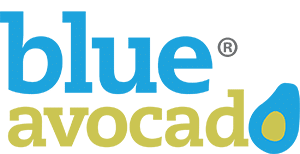Post-pandemic, what has changed for the better (or worse) in your nonprofit?
Nonprofit leaders offer insights into the post-pandemic era, detailing the changes that have impacted their organizations for better or worse.

In the five years since the start of the COVID-19 pandemic, nonprofits have faced new challenges and, in many cases, changed the way they operate. While some organizations have benefited from increased flexible funding and adapted to more efficient virtual work models, others continue to grapple with financial instability, increased demand for services, and difficulties in volunteer recruitment and staff retention.
When we recently asked the Blue Avocado community “Post-pandemic, what has changed for the better (or worse) in your nonprofit?” — once again, nonprofit leaders came through!
Here’s a summary of some of the best answers we received:
Remote Flexibility: Balancing Connection and Building Trust
There is more flexibility for people to work in a hybrid work model. This overall has been a positive since it reduces long commutes and lets us recruit and retain staff that might otherwise not apply.
On the downside, the reduction of in-person casual contact does impact the time it takes to build trust amongst team members. Having intentional team-building opportunities has been essential.
— Barbra Silver from Family Paths
Virtual Meetings for Increased Board Accessibility
During the pandemic, we needed to learn how to hold virtual meetings and we acquired the equipment to conduct hybrid meetings.
This has enabled us to include board members who are traveling for work, ill, or need to attend to their families. This makes it easier for our younger board members to participate.
— Paul Gloor from Grosse Ile Nature and Land Conservancy
Thriving Virtual Teams, Diminished In-Person Connections
I think we have established a strong virtual working culture that has allowed us to meaningfully engage staff around the world into a single dynamic team. It has also allowed us to extend our internship program to include interns from the global south, which has been rewarding for us in our work and helping us better achieve our mission.
On the negative side, it has made it hard — if not impossible — for us to meet in person for our team retreat, which I think has been an important element of connection and innovation for us, and we have not been able to replace that experience.
— Julie from Bridges to Development
Virtual Success, Partnership Growth, and Funding Challenges
Post-pandemic, we have seen both positive transformations and ongoing challenges.
We are increasing our virtual programming allowing us to reach wider and more diverse audiences, including individuals who may not have been able to attend in person due to mobility, transportation, or health-related barriers. This push toward digital inclusion is something we are working to maintain as in-person events return.
The shared experience of isolation brought our community closer together in many ways. Our audience became more engaged online, and partnerships with disability advocacy groups grew stronger, leading to more collaborative programming. The move to online formats encouraged us to think more creatively — about how films are screened, how discussions are held, and how we can use multimedia to enrich the experience.
While hybrid formats increase access, they also require more resources — both financial and human. Balancing high-quality, in-person and virtual experiences continues to be a stretch. Like many nonprofits, we experienced shifts in funding sources, causing resources to be scarce. As we return to physical venues, we’re finding that audience habits have changed. Getting people back into theaters and re-engaged in person takes time and trust.
— Paul Marengo from ReelAbilities Film Festival of Greater Washington
From 100% In-Person to Hybrid Excellence
We have become a great hybrid workplace! Pre-pandemic, our team was 100% in-person.
Now, we maximize the best of both worlds — the work/life balance and focus time that working from home provides, as well as the collegial and cross-training advantages of being in person.
— Maria Daane from Parents Helping Parents
Built Solidarity and Strength to Face Future Challenges
The pandemic presented challenges in our community and deeply affected how we live, interact, and support one another. For the DC LGBTQ+ Community Center, however, this crisis sparked moments of solidarity, creativity, and resilience.
As we navigated the uncertain and often-isolating times of the pandemic, we found ways to stay connected, support one another, and uplift our community through innovative programming. Despite the hardships, we came together in ways that strengthened our community.
Now, as we emerge from the pandemic, we are witnessing a new wave of strength and determination under the new threats our community is facing. The lessons we’ve learned, the connections we’ve made, and the resilience we’ve built are propelling us forward as we come together.
Our community is healing, but more importantly, we are empowered. The hardships of the past have only reinforced our commitment to advocating for equality, justice, and the rights of every LGBTQ+ individual.
Through the bonds we’ve created and strengthened, we remain strong. The DC LGBTQ+ Community Center is now more determined than ever to ensure that every person within our community has the resources, opportunities, and support they need to thrive.
We are ready to continue our work in advocating for equal rights, promoting mental and physical wellness, and fostering a sense of belonging for all LGBTQ+ individuals.
— Paul Marengo from The DC LGBTQ+ Community Center
Remote Work Boosts Flexibility and Team-Building Challenges
The shift to permanent remote-first work has been good and bad. It has allowed for greater flexibility for staff to move away from high-cost urban areas, it has created ways for staff to care for family (children and elders) when emergencies come up, and it certainly has allowed for many of us to rescue dogs — which we never could juggled with long commutes. (I now have a forever dog and a foster dog, who both make appearances in my Zoom meetings, whether I like it or not.)
We’ve had a lot of important conversations about equity that has prompted our organization to make changes to the way we operate. But the obvious bad is that we now have to be very intentional about creating opportunities to connect with each other, and the camaraderie and closeness has definitely suffered.
It also is a challenge for organizations that provide community-based services and want to be easily accessible to all community members. For those of us who do go into the office, we may be by ourselves, and it can lead to even more “siloing” of staff.
Pre-pandemic, we all knew how teams fit into the bigger picture of our organization’s mission because we talked about our work throughout the day with staff at all levels. Now, it is a bit tougher to see the connections between projects if you only meet with your team online.
— Salena Copeland from Legal Aid Association of California
Competition Decreases, Ticket Purchasing Habits Shift
The good news: We seem to have lost some of our competition during COVID-19.
The bad news: People now wait until the last minute to buy tickets for events.
— Susan Willats from Community Music School of Santa Cruz
Note: The opinions and product/service recommendations expressed above are solely those of the participants and do not necessarily represent those of Blue Avocado. Submissions may be edited for length and clarity.
Your Voice Matters!
Help other nonprofits grow by sharing your knowledge and insights with a chance to be featured in the next Ask the Blue Avocado Community results.
You might also like:
- What is your nonprofit’s approach to planning for leadership succession?
- How can nonprofits better collaborate and share resources with each other?
- What area of your nonprofit has benefited the most from having a specialist on your team?
- What has been a “happy accident” that ended up benefitting your nonprofit?
- What do nonprofits struggle with the most?
You made it to the end! Please share this article!
Let’s help other nonprofit leaders succeed! Consider sharing this article with your friends and colleagues via email or social media.
About the Author
Blue Avocado is an online magazine fueled by a monthly newsletter designed to provide practical, tactical tips and tools to nonprofit leaders. A small but mighty team of committed social sector leaders produces the publication, enlisting content from a wide range of practitioners, funders, and experts.
Articles on Blue Avocado do not provide legal representation or legal advice and should not be used as a substitute for advice or legal counsel. Blue Avocado provides space for the nonprofit sector to express new ideas. The opinions and views expressed in this article are solely those of the authors. They do not purport to reflect or imply the opinions or views of Blue Avocado, its publisher, or affiliated organizations. Blue Avocado, its publisher, and affiliated organizations are not liable for website visitors’ use of the content on Blue Avocado nor for visitors’ decisions about using the Blue Avocado website.







